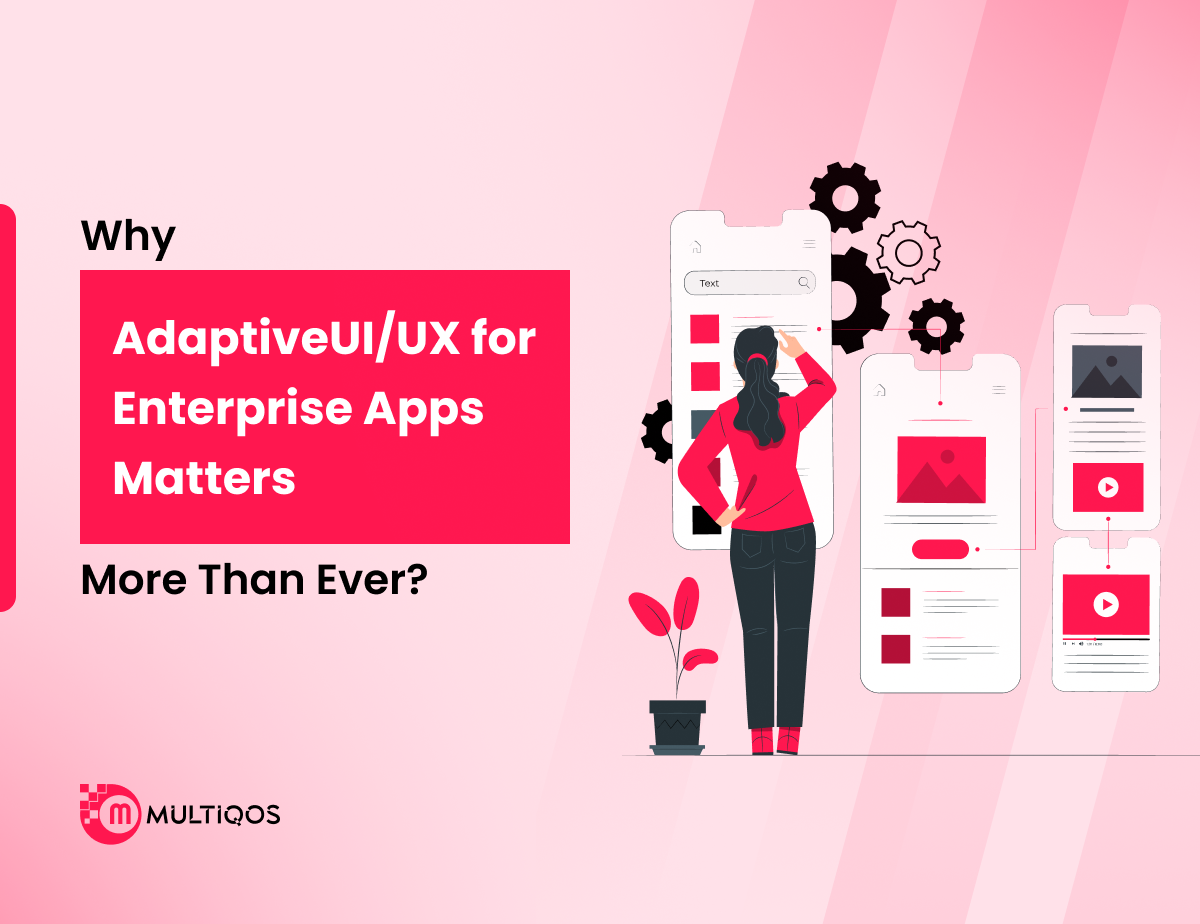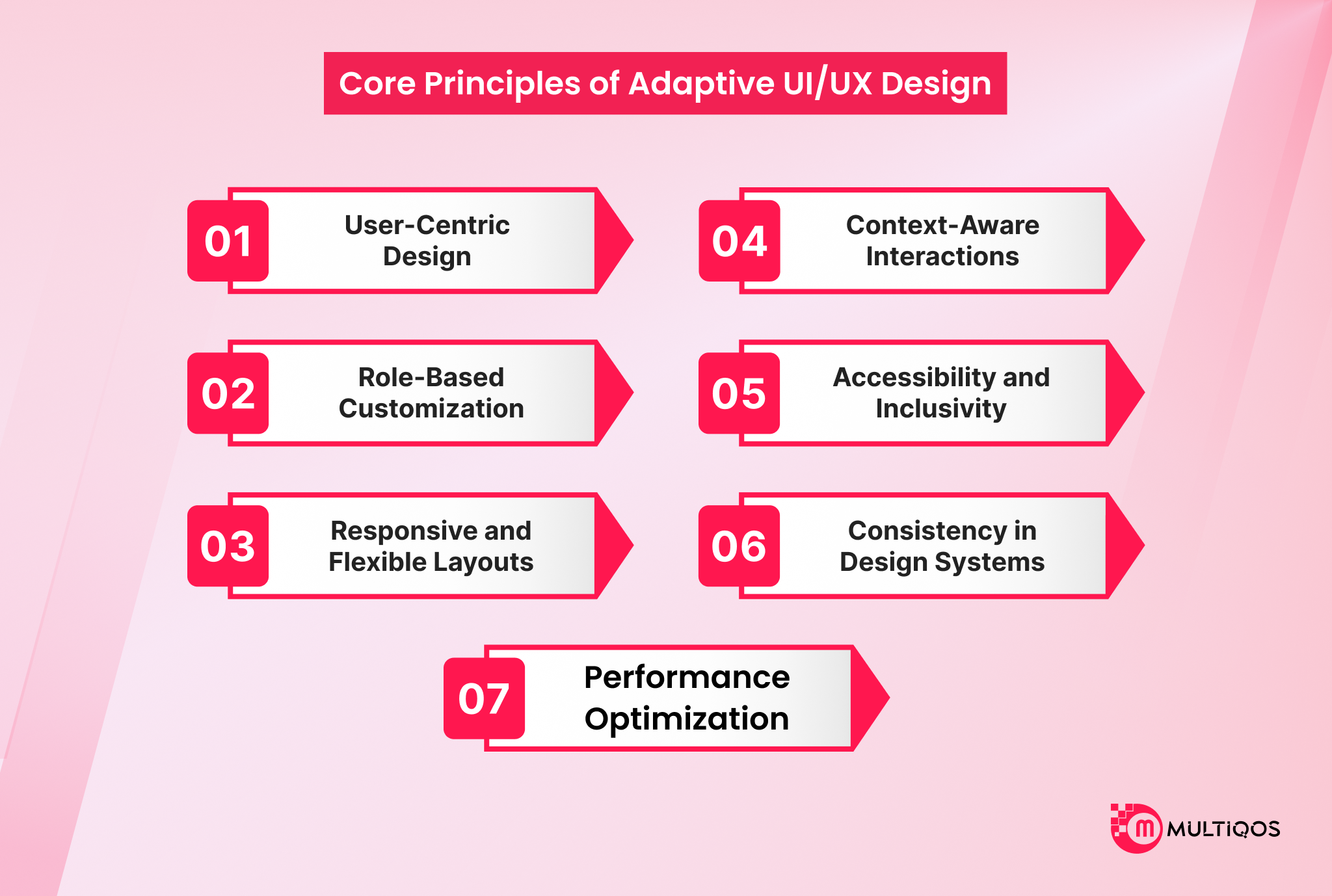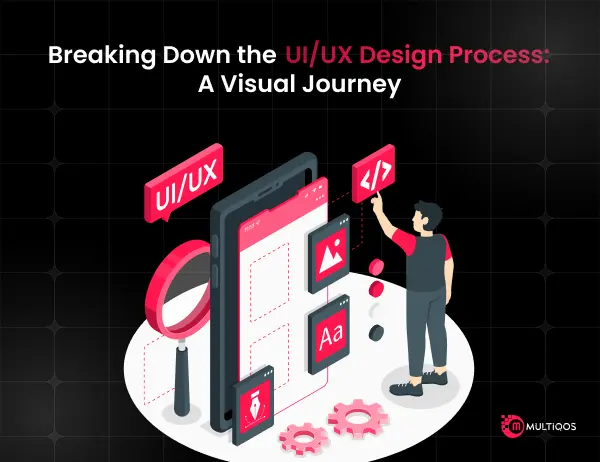Why Adaptive UI/UX for Enterprise Apps Matters More Than Ever?

Summary:
UI/UX for enterprise apps plays a critical role in driving user satisfaction, efficiency, and business success. Adaptive UI/UX ensures that enterprise applications seamlessly adjust to different devices, user roles, and workflows, enhancing productivity and engagement across teams.
As businesses embrace remote work, global collaboration, and diverse user needs, designing flexible and responsive interfaces has become more important than ever. A well-crafted adaptive design not only improves usability but also strengthens brand credibility and operational efficiency, making it a key differentiator for enterprises aiming to deliver superior digital experiences.
Introduction
Startups and enterprises are under continuous pressure to deliver efficient, streamlined user experiences across platforms. This is where UI/UX for initiative apps takes center stage. As organizations rely more on digital tools to streamline workflows and authorize employees, adaptive UI/UX for enterprise apps has become a real game-changer.
It ensures that applications perform reliably across various devices, user roles, and environments, creating authenticity and optimization. In a time when user expectations are higher than ever, adaptive UI/UX helps enterprises stay agile, user-focused, and competitive in an increasingly connected digital ecosystem.
Why Adaptive UI/UX Matters for Enterprises Today
Businesses rely heavily on technology to keep teams connected, operations smooth, and customers satisfied. However, as enterprise systems grow in scale and complexity, ensuring a seamless, consistent user experience becomes increasingly challenging. That’s where UI/UX for enterprise apps plays a crucial role.
Modifiable UI/UX for undertaking apps focuses on creating interfaces that automatically adjust to different devices, screen sizes, and user roles. Whether an employee is working from a desktop in the office or using a mobile device in the field, the experience remains fluid and intuitive. This adaptability not only improves accessibility but also enhances overall productivity, allowing users to focus more on their tasks rather than navigating complicated interfaces.
Moreover, with remote and hybrid work progressing into the new normal, organizations must deliver digital experiences that perform clearly at any location, anytime. Adaptive UI/UX for enterprise apps ensures that applications stay responsive and user-friendly across diverse platforms, helping organizations maintain participation, economy, and satisfaction at a total level. In short, it’s not just about a good UI/UX design process; it’s about building enterprise apps that motivate people to work smarter and faster.
Key Benefits of Adaptive UI/UX for Enterprise Apps
Here are the key benefits of adaptive UI/UX for Enterprise Apps that help businesses deliver smarter, faster, and more user-friendly digital experiences:
1. Consistent Experience Across Devices
Adaptive UI/UX ensures that users enjoy a seamless experience whether they’re on a desktop, tablet, or smartphone. Consistency across platforms reduces confusion, builds user confidence, and encourages higher adoption rates of enterprise tools.
2. Enhanced Employee Productivity
When applications are easy to navigate and visually clear, employees spend less time figuring out workflows and more time completing tasks efficiently. Well-designed adaptive UI/UX for enterprise apps directly translates to improved productivity and reduced errors.
3. Greater User Engagement and Satisfaction
Adaptive interfaces respond intelligently to each user’s needs, ensuring smoother interactions and a more personalized experience. This keeps employees and clients engaged, motivated, and satisfied with the digital tools they use daily.
4. Scalability for Growing Business Needs
As enterprises evolve, so do their software requirements. Adaptive UI/UX allows applications to scale effortlessly, supporting new modules, user roles, and devices without compromising performance or usability. This is especially valuable when paired with strong application development services, ensuring the system grows smoothly with the organization.
5. Improved Accessibility and Inclusivity
Adaptive design makes enterprise apps more accessible to users with diverse needs and abilities. From adjustable layouts to support for assistive technologies, adaptive UI/UX for enterprise apps ensures everyone can use the platform effectively.
6. Reduced Training and Support Costs
A user-friendly and intuitive interface minimizes the need for extensive training or technical support. Employees can quickly understand and adapt to the system, saving both time and operational costs for the organization.
7. Better Return on Investment (ROI)
Enterprises gain measurable value from UI/UX through higher user adoption, improved efficiency, and fewer usability issues. Investing in adaptive UI/UX for enterprise apps leads to long-term cost savings and sustainable business growth.
Core Principles of Adaptive UI/UX Design
Creating an adaptive user experience requires more than just making interfaces look good; it’s about designing with flexibility, functionality, and user intent in mind. Partnering with the right UI/UX design company can help enterprises achieve this balance effectively. Here are the core principles that define adaptive UI/UX for enterprise apps:
1. User-Centric Design
Every adaptive interface starts with understanding the termination users, their roles, ends, and challenges. In venture environments, employees from different departments may interact with the same steps differently. A user-key plan ensures that expertise is tailored to specific workflows and responsibilities.
2. Role-Based Customization
Adaptive UI/UX for enterprise apps allows interfaces to change based on user roles or permissions. For instance, a manager might see data science dashboards, while a field worker views event updates. This principle ensures that users only access what’s appropriate to them, improving economy and reducing clutter.
3. Responsive and Flexible Layouts
A key section of resilient design is responsiveness. Whether opened from an important desktop monitor or a small smartphone, the layout should automatically modify to maintain usability and beauty. This agility guarantees a stable understanding across platforms and devices.
4. Context-Aware Interactions
Adaptive UI/UX for enterprise apps considers the user’s locale and reactions. For illustration, business apps can improve characteristics or interface elements based on location, device type, or user activity. This perspective-insight leads to more intuitive and skilled user experiences.
5. Accessibility and Inclusivity
Modern organizations serve diverse teams, including users with varying expertise. Incorporating openness functions such as keyboard navigation, color contrast, and voice reserve ensures that each user can interact seamlessly with the application.
6. Consistency in Design Systems
Maintaining a unified design system across all modules ensures coherence and reduces the learning curve. Consistency in color schemes, typography, icons, and navigation patterns helps users feel familiar and confident, no matter where they are in the app.
7. Performance Optimization
Modifiable design should not compromise speed. Lightweight layouts, optimized graphics, and quick coding help firm apps run relaxedly on everything devices. Instant performance increases productivity and creates a finer overall user understanding.
Conclusion
Investing in adaptive UI/UX for enterprise apps goes far beyond aesthetics; it’s about building digital solutions that enhance user productivity, simplify complex workflows, and drive measurable business outcomes. As enterprises continue to embrace digital transformation, adaptive design ensures flexibility, scalability, and seamless performance across all devices.
To bring this vision to life, it’s crucial to hire UI UX designers who understand the importance of user-centric design and technical excellence. With the right team, your enterprise can deliver intuitive, adaptive applications that not only meet today’s needs but also evolve with tomorrow’s challenges.
FAQs
With hybrid work models, diverse teams, and multiple digital touchpoints, transformable UI/UX has turn into crucial for establishments. It ensures endless approachableness, uplifts user satisfaction, and uplifts fully productivity by bringing an optimized involvement for complete user scenario.
A well-designed UI/UX for endeavor apps simplifies intricate workflows, reduces user errors, and accelerates action completion. When employees can navigate tools painlessly, they perform finer, premier to enhanced collaboration, faster settlement-constructing, and higher ROI for the organization.
Firms can kick off by considering user attitude, outlining role-derived experiences, and adopting design systems that substitute flexibility. Partnering with experienced designers and developers who specialize in UI/UX for company apps ensures that the resilient technique aligns with business ends and user needs.
Core elements mix responsive layouts, dynamic components, customizable dashboards, convenience features, and performance optimization. Together, these elements confirm the app adapts fluidly to user preferences, device types, and active scenarios.
Getting enabled is basic, our team at MultiQoS specializes in building flexible, user-targeted startup applications that harmonize innovation with performance. Whether you’re revamping an existing approach or creating a new one from scratch, our experts can help you design and develop strategies that fit exactly with your business objectives. Bond us today to discuss your project and discover how the correct UI/UX for company apps can transform your organization knowledge.
Get In Touch








